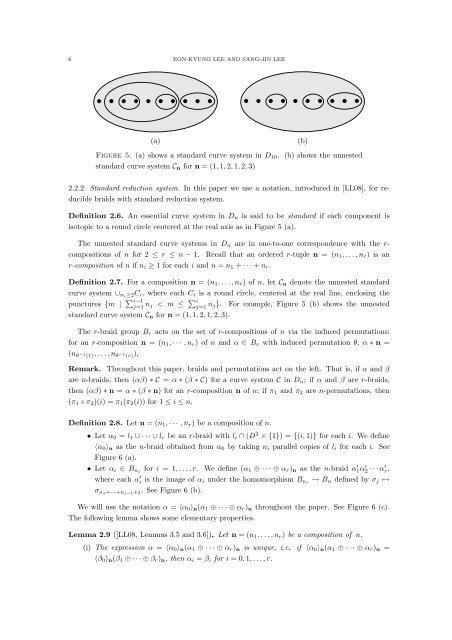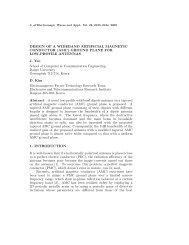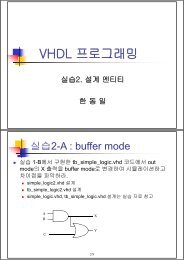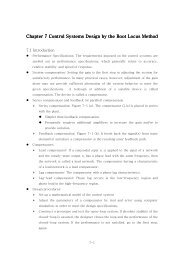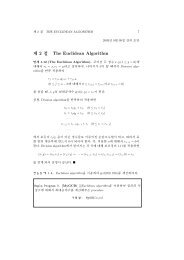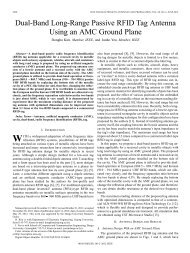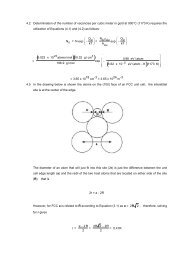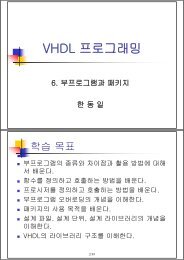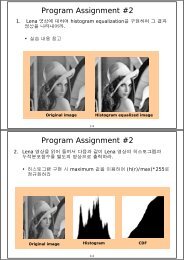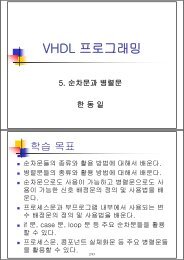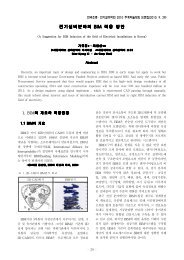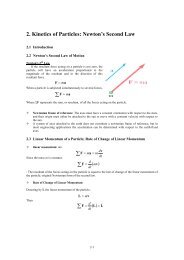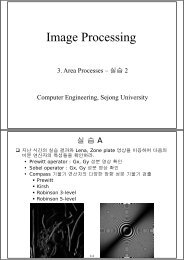UNIQUENESS OF ROOTS UP TO CONJUGACY FOR SOME ...
UNIQUENESS OF ROOTS UP TO CONJUGACY FOR SOME ...
UNIQUENESS OF ROOTS UP TO CONJUGACY FOR SOME ...
Create successful ePaper yourself
Turn your PDF publications into a flip-book with our unique Google optimized e-Paper software.
6 EON-KYUNG LEE AND SANG-JIN LEE<br />
(a)<br />
Figure 5. (a) shows a standard curve system in D 10 . (b) shows the unnested<br />
standard curve system C n for n = (1, 1, 2, 1, 2, 3)<br />
(b)<br />
2.2.2. Standard reduction system. In this paper we use a notation, introduced in [LL08], for reducible<br />
braids with standard reduction system.<br />
Definition 2.6. An essential curve system in D n is said to be standard if each component is<br />
isotopic to a round circle centered at the real axis as in Figure 5 (a).<br />
The unnested standard curve systems in D n are in one-to-one correspondence with the r-<br />
compositions of n for 2 ≤ r ≤ n − 1. Recall that an ordered r-tuple n = (n 1 , . . . , n r ) is an<br />
r-composition of n if n i ≥ 1 for each i and n = n 1 + · · · + n r .<br />
Definition 2.7. For a composition n = (n 1 , . . . , n r ) of n, let C n denote the unnested standard<br />
curve system ∪ ni ≥2C i , where each C i is a round circle, centered at the real line, enclosing the<br />
punctures {m | ∑ i−1<br />
j=1 n j < m ≤ ∑ i<br />
j=1 n j}. For example, Figure 5 (b) shows the unnested<br />
standard curve system C n for n = (1, 1, 2, 1, 2, 3).<br />
The r-braid group B r acts on the set of r-compositions of n via the induced permutations:<br />
for an r-composition n = (n 1 , · · · , n r ) of n and α ∈ B r with induced permutation θ, α ∗ n =<br />
(n θ −1 (1), . . . , n θ −1 (r)).<br />
Remark. Throughout this paper, braids and permutations act on the left. That is, if α and β<br />
are n-braids, then (αβ) ∗ C = α ∗ (β ∗ C) for a curve system C in D n ; if α and β are r-braids,<br />
then (αβ) ∗ n = α ∗ (β ∗ n) for an r-composition n of n; if π 1 and π 2 are n-permutations, then<br />
(π 1 ◦ π 2 )(i) = π 1 (π 2 (i)) for 1 ≤ i ≤ n.<br />
Definition 2.8. Let n = (n 1 , · · · , n r ) be a composition of n.<br />
• Let α 0 = l 1 ∪ · · · ∪ l r be an r-braid with l i ∩ (D 2 × {1}) = {(i, 1)} for each i. We define<br />
〈α 0 〉 n as the n-braid obtained from α 0 by taking n i parallel copies of l i for each i. See<br />
Figure 6 (a).<br />
• Let α i ∈ B ni for i = 1, . . . , r. We define (α 1 ⊕ · · · ⊕ α r ) n as the n-braid α 1α ′ 2 ′ · · · α r,<br />
′<br />
where each α i ′ is the image of α i under the homomorphism B ni → B n defined by σ j ↦→<br />
σ n1+···+n i−1+j. See Figure 6 (b).<br />
We will use the notation α = 〈α 0 〉 n (α 1 ⊕ · · · ⊕ α r ) n throughout the paper. See Figure 6 (c).<br />
The following lemma shows some elementary properties.<br />
Lemma 2.9 ([LL08, Lemmas 3.5 and 3.6]). Let n = (n 1 , . . . , n r ) be a composition of n.<br />
(i) The expression α = 〈α 0 〉 n (α 1 ⊕ · · · ⊕ α r ) n is unique, i.e. if 〈α 0 〉 n (α 1 ⊕ · · · ⊕ α r ) n =<br />
〈β 0 〉 n (β 1 ⊕ · · · ⊕ β r ) n , then α i = β i for i = 0, 1, . . . , r.


